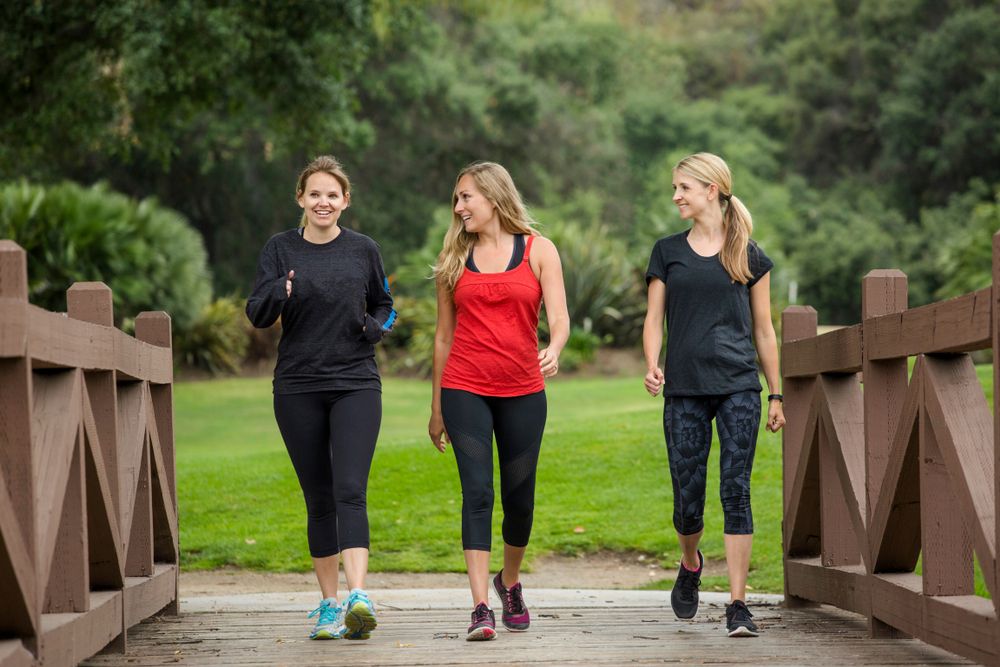Walking is a fundamental component of an active lifestyle, celebrated for its efficacy in weight management and overall health. This low-intensity steady-state cardio activity not only burns calories and enhances metabolism but also establishes a strong groundwork for achieving weight-loss objectives. However, why settle for the basics? By integrating strength training exercises into your walking routine, you can significantly enhance your workouts and propel your fitness journey to unprecedented levels. Hence, I've curated the ultimate 30-day interval walking workout tailored for weight loss.
From classic exercises like walking lunges to more innovative variations, there exists a myriad of options to keep your weekly regimen both stimulating and productive. These workouts are meticulously crafted with increased volume, incorporating multiple sets and repetitions with minimal rest intervals to maximize the benefits of weight loss. Whether you're advancing forward or sidestepping, you'll swiftly progress toward your weight loss goals through these dynamic routines. All it takes is your dedication, ingenuity, and minimal equipment to embark on this transformative journey.
Get ready to embrace a new challenge every week as the exercises evolve, while still adhering to the fundamental principles of effective weight loss workouts. Experience not only variety in your routine but also witness the intervals progressively intensify over time. Each week, expect the intensity to ramp up, presenting a weekly test of your capabilities.
Continue reading for the ultimate 30-day interval walking workout tailored for weight loss.
Days 1—7
1) Walking Lateral Lunges with a Press-out

The initial phase of this 30-day interval walking workout for weight loss commences with the inclusion of walking lateral lunges with a press-out. Integrating lateral exercises into your fitness routine presents an excellent strategy for cultivating a robust and versatile physique. While conventional strength exercises predominantly target forward, backward, or vertical movements, lateral movements often remain overlooked. Consider lateral lunges, for instance; they offer remarkable benefits for enhancing single-leg strength and specifically targeting the adductor muscles, which are frequently neglected in lower-body workouts.
To execute walking lateral lunges with a press-out, begin by positioning yourself with your feet shoulder-width apart and gripping a weight plate in front of your chest. Step to the right with your right foot, bending your knee while maintaining your left leg straight, and descend into a lateral squat. Lower your body until your right thigh aligns parallel to the ground, simultaneously extending the weight plate (or alternative equipment like a dumbbell, kettlebell, or med ball) straight out. Then, propel yourself back to the starting position by pushing off, followed by taking a lateral step to the right and repeating the lateral lunge with a press-out motion.
Engage in three to five sets consisting of 30 seconds of activity followed by a 30-second rest interval per side. Execute all repetitions on one side before proceeding to replicate the sequence on the opposite side. Allow a 60-second rest period between exercises.
2) Walking Lunges with Core Rotation
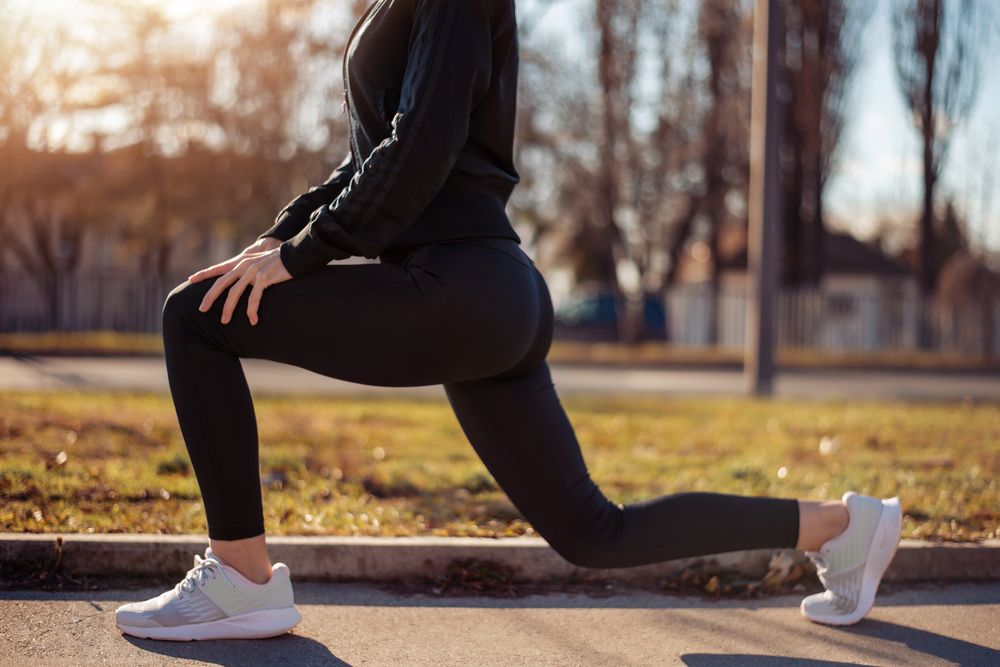
Walking lunges are renowned for enhancing single-leg strength and hip stability, as well as promoting lean muscle development in the quadriceps, hamstrings, and glutes. Introducing a rotational core exercise alongside elevates the intensity, sculpting your abs and infusing variety into your workout regimen. This dynamic combination not only targets lower-body muscles but also engages the core, fostering overall strength and boosting metabolism.
Begin by stepping forward with your right foot into a lunge position, simultaneously rotating your torso to the right while holding a dumbbell, kettlebell, or weight plate. Return to the center and push off with your right foot to revert to the starting position. Repeat the process on the left side, rotating your torso to the left. Alternate between sides with each lunge, prioritizing controlled movements and upholding proper posture throughout.
Complete three to five sets comprising 30 seconds of active work followed by 30 seconds of rest. Take a 60-second rest interval between exercises.
3) Suitcase Carry
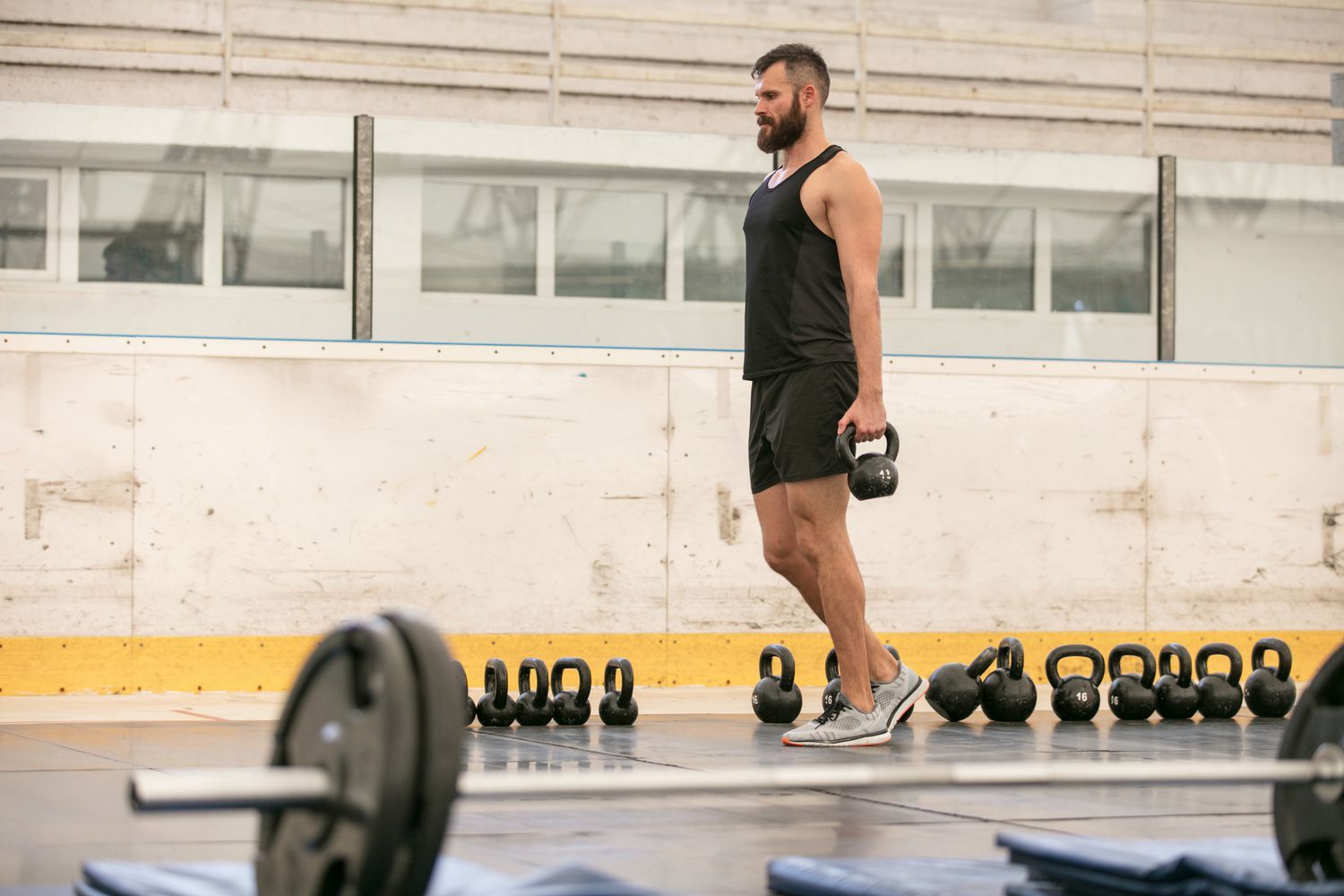
Suitcase carries serve as a valuable tool in torching calories and trimming fat, activating multiple muscles simultaneously to sculpt your body and accelerate your metabolism. Offering a full-body workout in one movement, they're perfect for optimizing fat loss and achieving your fitness goals.
To execute suitcase carries, grasp a heavy dumbbell or kettlebell, stand upright, activate your core and upper back, and proceed to walk forward with controlled strides for the designated distance or number of steps.
Engage in three to five sets, each comprising 30 seconds of active work followed by a 30-second rest period. Allow a 60-second rest interval between exercises to maximize your performance.
Days 8—15
1) Walking Lunges with Overhead Carry
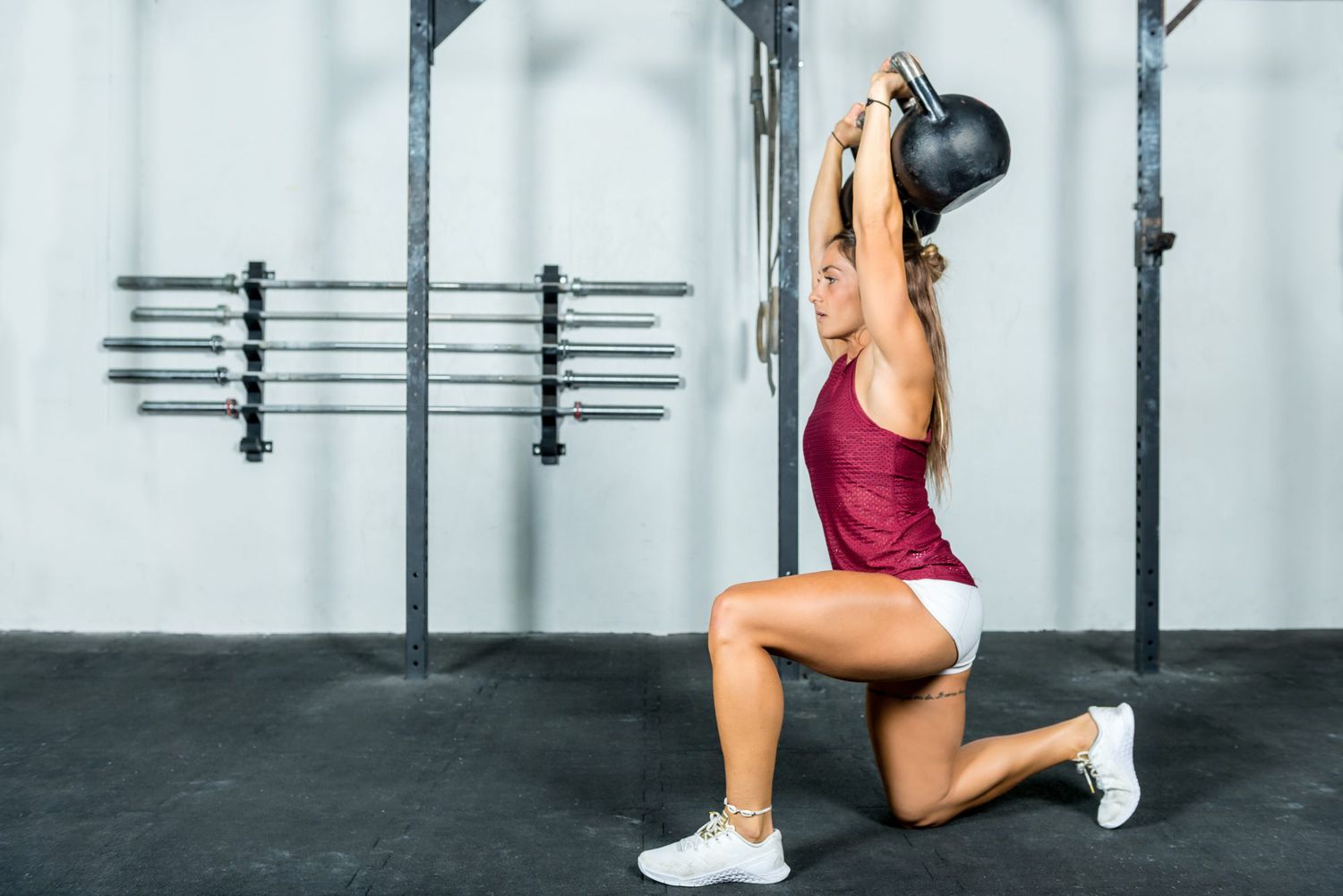
No interval walking workout designed for weight loss is complete without incorporating the walking lunge with overhead carry. This exercise seamlessly integrates lower-body strength with overhead stability, resulting in a powerful full-body compound movement. By fortifying your legs, and enhancing core stability and coordination, it unlocks greater fat-burning potential.
To execute the walking lunge with overhead carry, stand tall and hold a weight overhead with one hand, ensuring your arm is fully extended. Engage your core to maintain stability as you take a large step forward with your right foot, descending into a lunge position while keeping the weight overhead. Propel yourself off your right foot to return to the starting position, then replicate the movement on the left side.
Embark on three to five sets, with each set consisting of 40 seconds of active work followed by a 20-second rest interval. Alternate the hand holding the weight each round to ensure balanced development. Allow a 60-second rest period between exercises to optimize recovery and performance.
2.) Alternating Overhead Press with Walking
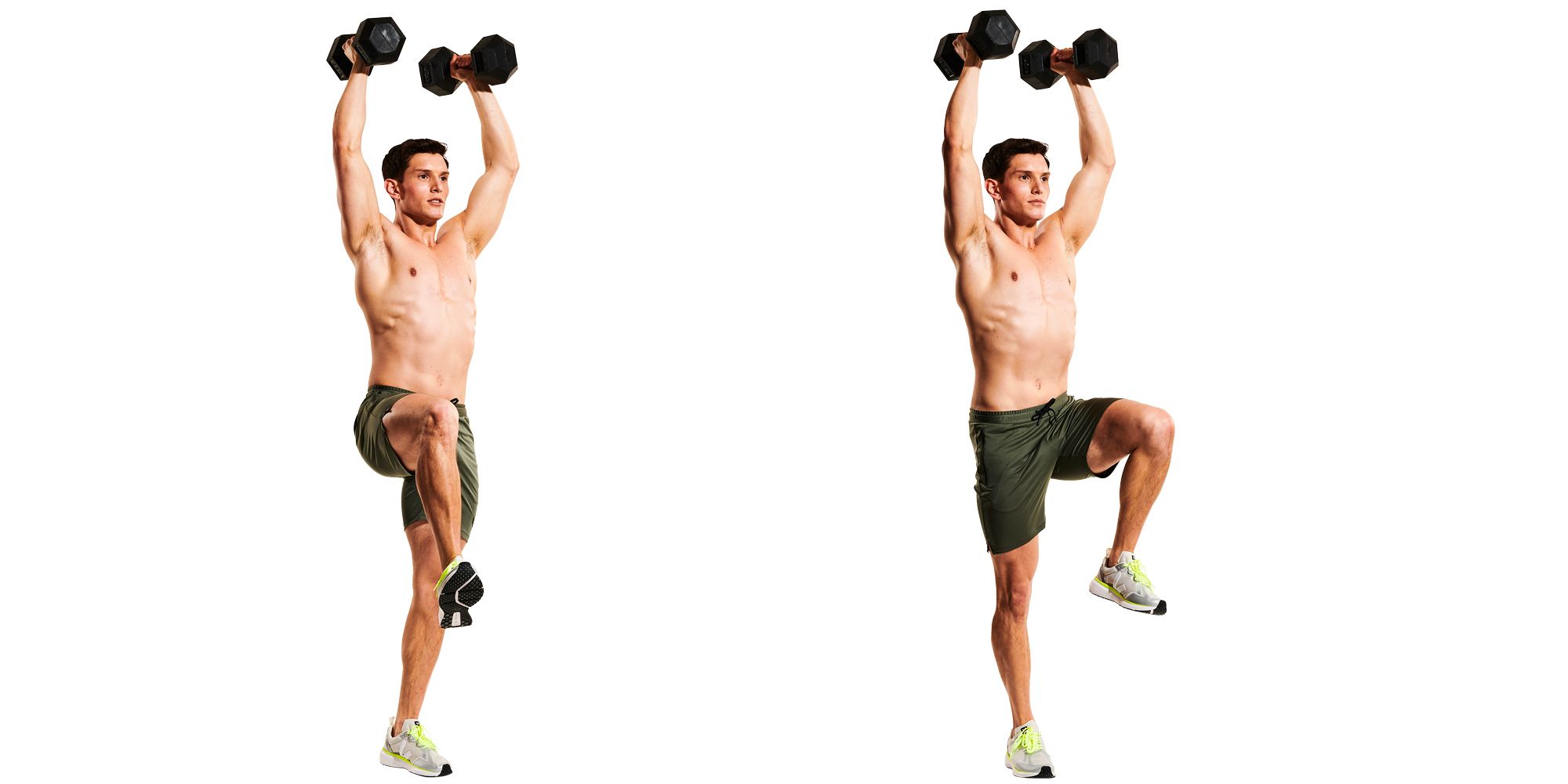
You already recognize the cardiovascular advantages of low-intensity walking. Incorporating overhead presses into your regimen blends these benefits with strength enhancements. Opting for higher repetition ranges in overhead presses boosts muscular endurance and optimizes overall gains.
Begin by standing with your feet shoulder-width apart, gripping dumbbells at shoulder level. Press one dumbbell overhead while stepping forward with the opposite foot, alternating arms and legs as you move forward. Ensure proper posture and engage your core throughout the movement.
Commit to three to five sets, with each set comprising 40 seconds of activity followed by a 20-second rest interval. Allow a 60-second rest period between exercises to facilitate recovery and maintain performance levels.
3) Dumbbell Front Rack Forward Marching
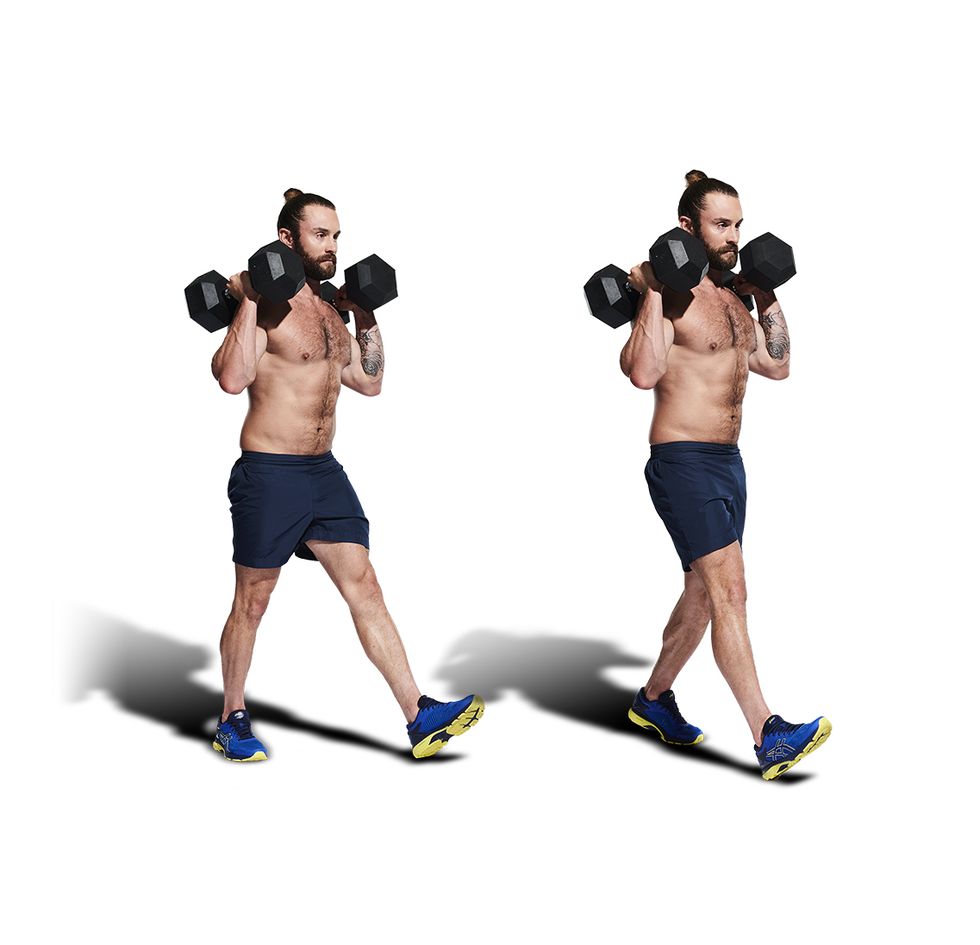
Marching exercises excel in strengthening your hip muscles, particularly the hip flexors, while simultaneously cultivating a robust and steady core. The dynamic movement of moving forward while stabilizing your torso amplifies the exercise's efficacy, augmenting calorie expenditure during your workout sessions.
To perform weighted front rack forward marching, grasp a pair of dumbbells or kettlebells in the front rack position. Step forward with one foot while raising the opposite knee toward your chest, then alternate legs. Ensure to engage your core muscles for stability and maintain control throughout the exercise.
Execute three to five sets, each consisting of 40 seconds of active work followed by a 20-second rest period. Allow a 60-second rest interval between exercises to facilitate recovery and optimize performance.
Days 16—23
1) Walking Lunges with Dumbbell Bicep Curls
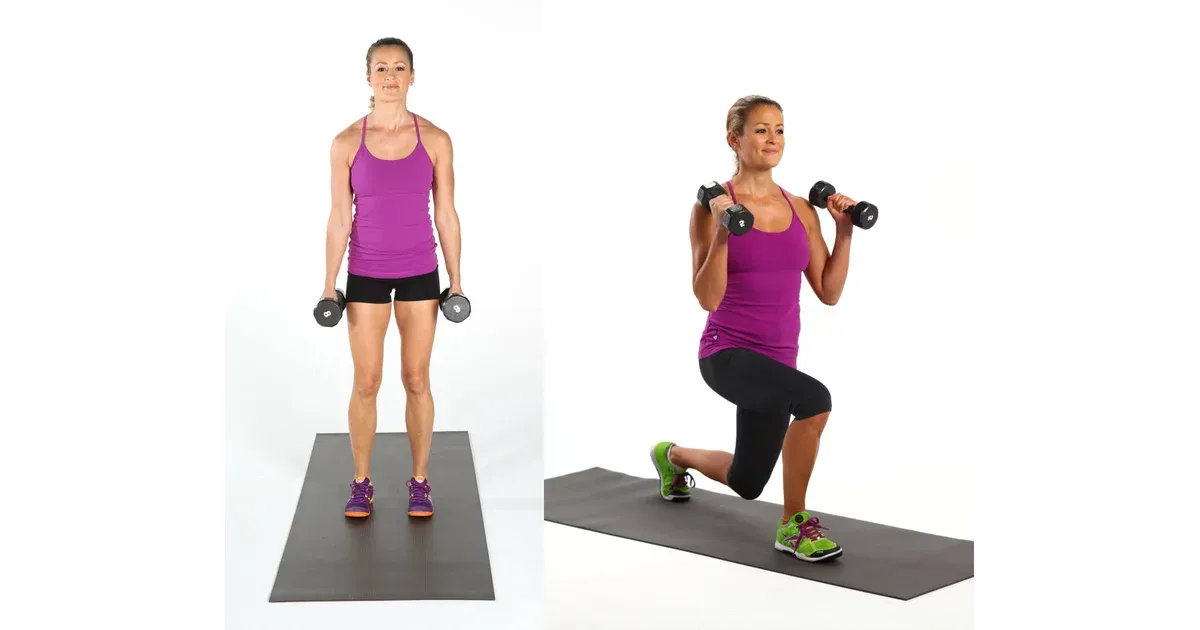
Pairing walking lunges with bicep curls ranks among my top choices for wrapping up high-rep training sessions with clients focused on weight loss. Walking lunges hone in on single-leg strength, sculpting your quads, glutes, and hamstrings, while bicep curls target the enhancement of your biceps. By amalgamating these movements, core engagement is heightened, offering a comprehensive workout regimen.
To begin, stand upright and grasp a dumbbell in each hand at arm's length by your sides. Step forward with your right foot into a lunge position, simultaneously bending both knees and lowering your body. Curl the dumbbells toward your shoulders as you lunge, engaging your biceps. Push off your right foot to return to the starting position, lowering the dumbbells. Alternate sides, stepping forward with your left foot, and repeating the lunge and bicep curl motion.
Execute three to five sets, each comprising 45 seconds of active work followed by a 15-second rest period. Allow a 90-second rest interval between exercises to promote optimal recovery and performance.
2) Mini-band Forward Walk

Mini-band forward walks are excellent for activating your glute muscles and enhancing hip stability. This exercise proves beneficial whether used in a warm-up routine or integrated into a strength workout, aiding in sculpting your lower body.
To perform mini-band forward walks, position a resistance band just above your ankles or below your knees to create tension. Stand with your feet hip-width apart, knees slightly bent, and engage your core muscles. Proceed to take small steps forward, ensuring that the band maintains tension throughout the movement. Alternate bringing each foot forward while maintaining controlled motions and proper posture.
Engage in three to five sets, each comprising 45 seconds of active work followed by a 15-second rest period. Allow a 90-second rest interval between exercises to facilitate recovery and sustain optimal performance.
Days 24—30
1) Mini-band Lateral Walks with Dumbbell Lateral Raise
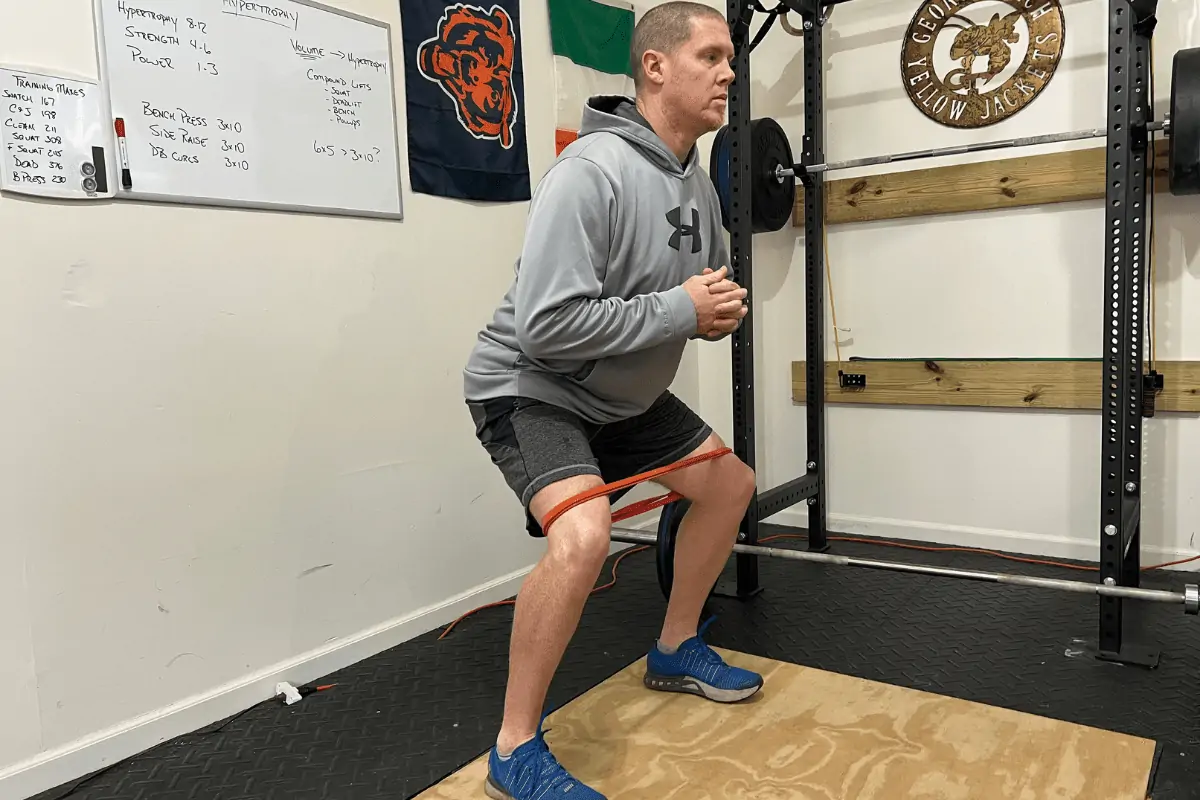
The final segment of this 30-day interval walking workout for weight loss commences with the mini-band lateral walk. This exercise effectively activates your glutes while also strengthening smaller hip muscles like the piriformis. Combining it with dumbbell lateral raises targets your upper body, enhancing shoulder and trap strength. Pairing these potent lateral movements offers the best of both worlds, fostering full-body strength and facilitating weight loss.
To begin, position a mini resistance band above your knees and hold dumbbells at your sides. Step to the side with one foot while maintaining tension on the band, then follow with the other foot to return to hip-width apart. Simultaneously, execute a lateral raise with the dumbbells, elevating them to shoulder height and lowering them back to your sides as you step together.
Complete three to five sets, with each set consisting of 50 seconds of active work followed by a 10-second rest period. Take a 120-second rest interval between exercises to optimize recovery and maintain performance levels.
2) Walking Lateral Squats with Plate Pressout
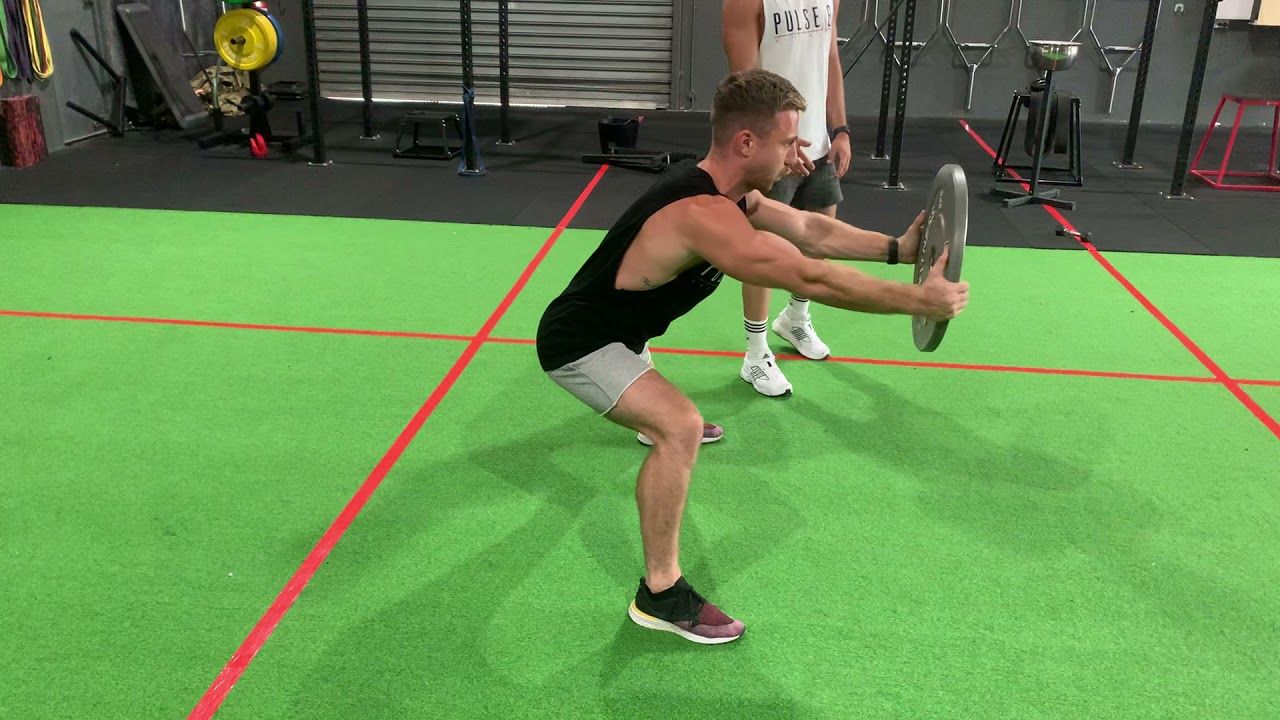
Revitalize your workout regimen with a high-impact fat-burning exercise: the walking lateral squat with a plate press-out. This dynamic movement simultaneously engages your quads, glutes, shoulders, and core, injecting a stimulating side-to-side motion into your routine and ensuring your gym sessions remain challenging and diverse.
To execute the walking lateral squat with plate press-out, grasp a weight plate in front of your chest and stand with your feet hip-width apart. Step laterally to the right, descending into a squat while extending the plate straight before you. Return your left foot to the starting position under your hips, maintaining hip-width distance between your feet. Repeat for the desired number of repetitions and sets.
Engage in three to five sets, with each set comprising 50 seconds of active work followed by a 10-second rest period. Take a 120-second rest interval between exercises to optimize recovery and maintain intensity throughout your workout.
3) Walking Overhead Dumbbell Carry
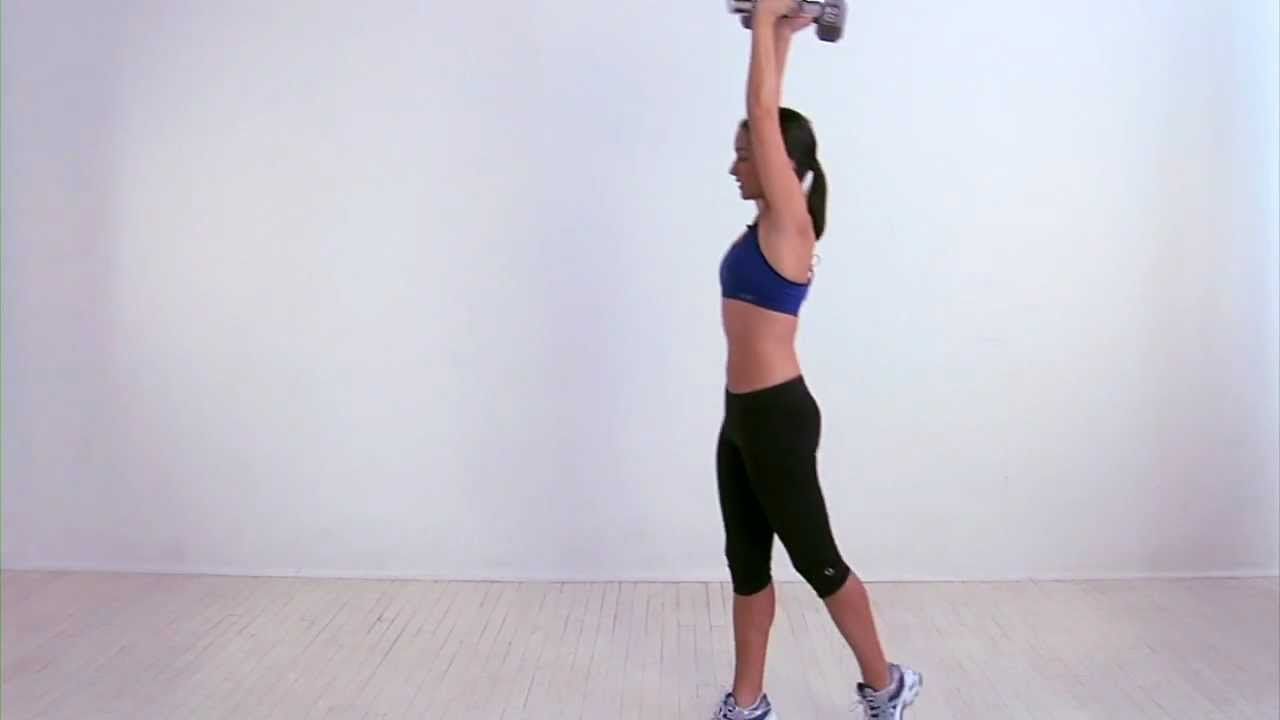
The walking overhead dumbbell carry is a dynamic exercise renowned for its ability to enhance overhead strength and stability, targeting key muscle groups such as the shoulders, upper back, and core. The addition of walking introduces an extra layer of versatility, requiring increased stability to effectively control the weights while in motion.
To perform the walking overhead dumbbell carry, begin by standing upright and pressing dumbbells directly overhead with your arms fully extended. Engage your core muscles and commence walking, maintaining stability as you stabilize the dumbbells overhead until you reach the predetermined distance or time. Focus on keeping your arms straight above your shoulders throughout the exercise, actively reaching with each step to optimize its effectiveness.
Complete three to five sets, with each set consisting of 50 seconds of active work followed by a 10-second rest period. Take a 120-second rest interval between exercises to ensure adequate recovery and sustain optimal performance.

